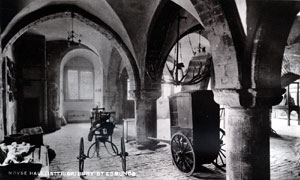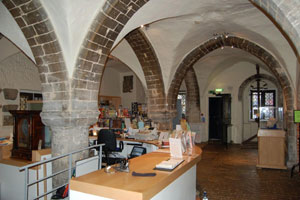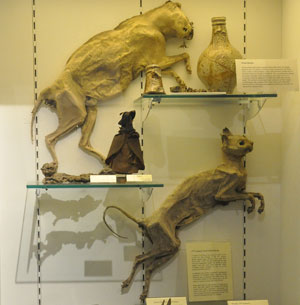
This case shows how beliefs have changed, and how witchcraft was accepted as factual. Mummified cats and old shoes found in house renovations are evidence of the practice. |
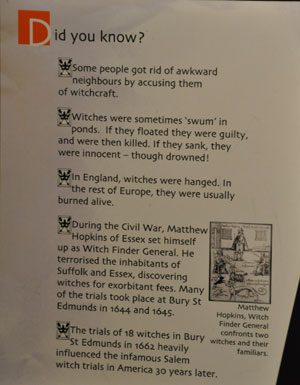
There were many books condemning the practice of witchcraft, and witch trials were the sensations of the day. The trial and execution of 18 witches in Bury St Edmunds in 1645, and of two women in 1662 at Bury, was echoed at Salem, in colonial Massachusetts, USA, in 1692. The Witchcraft laws were not finally abolished in England until 1736. |
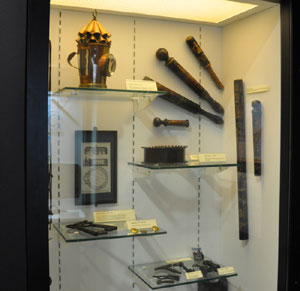
This case shows a variety of police equipment and restraints. |
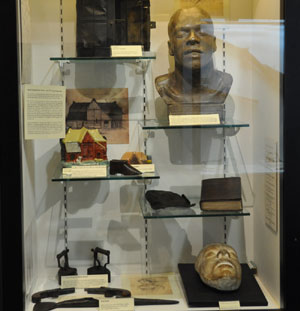
The famous Red Barn Murder and the hanging of William Corder is a favourite exhibit. |
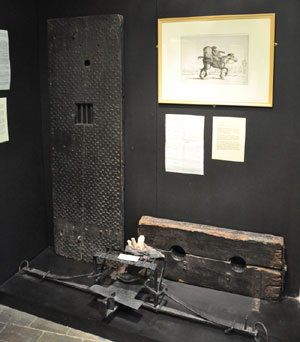
A cell door, some stocks and a man trap illustrate the hazards of a criminal career. |
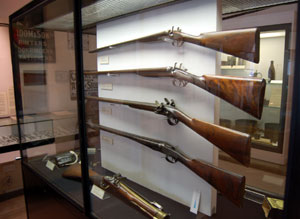
This case of shotguns shows the work of local gunsmiths. |
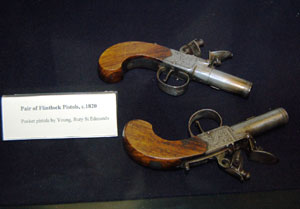
A pair of flintlock pocket pistols by Young of Bury St Edmunds c1840. |
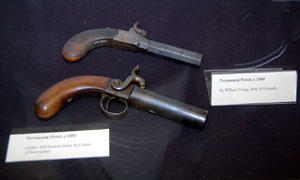
The lower pistol to the left is a .620 calibre boxlock by Colson of Stowmarket, dated 1850. The upper percussion pistol is by William Young of Bury, dated c1840. |
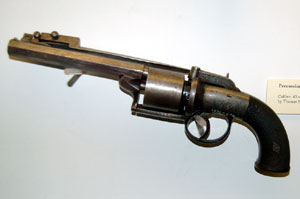
This 0.43 calibre percussion revolver is from about 1840, and includes a spring bayonet. It was made by Thomas Norfolk of Bury St Edmunds. |


